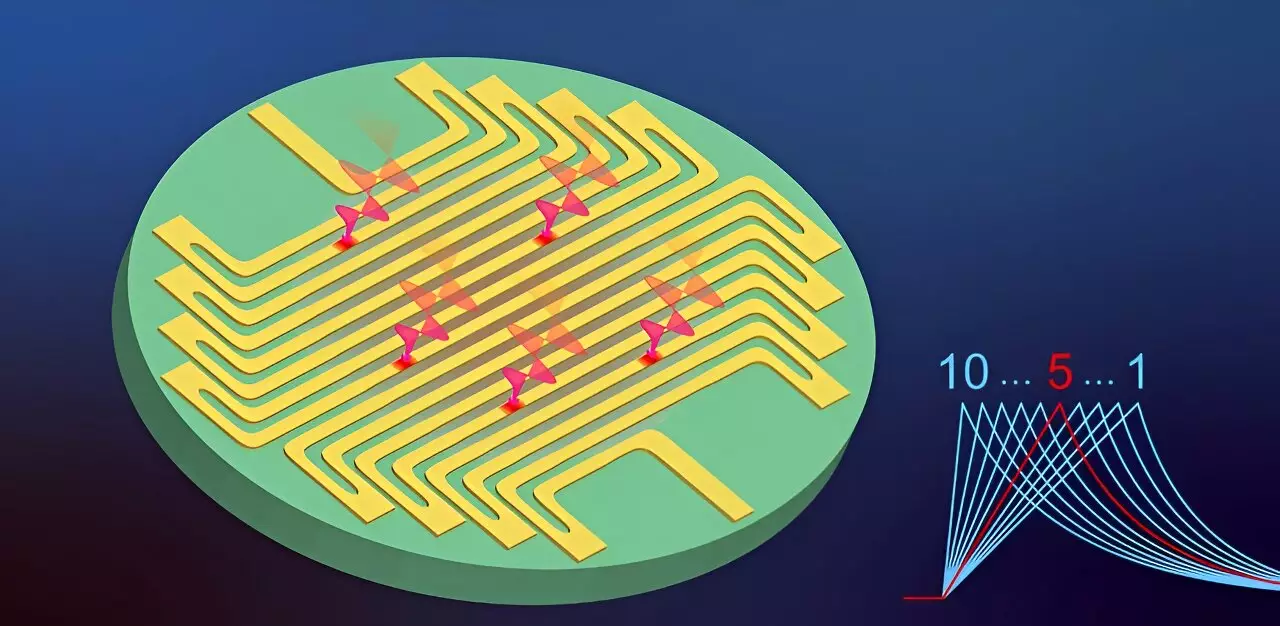Quantum information technology heavily relies on the use of qubits implemented with single photons. In order to accurately utilize these qubits, it is essential to determine the number of photons involved. Photon-number-resolving detectors (PNRDs) are crucial for achieving this accuracy, providing two main performance indicators: resolving fidelity and dynamic range.
Superconducting nanostrip single-photon detectors, or SNSPDs, are considered the leading technology for this purpose due to their near-perfect efficiency and high-speed performance. However, when it comes to photon-number resolution, SNSPD-based PNRDs face certain challenges. Traditional array-style SNSPDs, which divide the incident photons among a limited number of pixels, have fidelity constraints and are often referred to as quasi-PNRDs.
Researchers from the Shanghai Institute of Microsystem and Information Technology (SIMIT), Chinese Academy of Sciences, have made significant progress in enhancing the photon-number-resolving capability of SNSPDs. By increasing the strip width or total inductance of the SNSPD, they were able to overcome bandwidth limitations and timing jitter in readout electronics.
This breakthrough resulted in stretched rising edges and an improved signal-to-noise ratio in the response pulses, enhancing the readout fidelity of the detector. The researchers widened the superconducting strip to a micrometer scale, leading to the first observation of true-photon-number resolution up to 10 using the newly developed superconducting microstrip single-photon detector (SMSPD).
What makes this achievement even more remarkable is that the researchers achieved these results without the use of cryogenic amplifiers. The readout fidelity reached an impressive 98 percent for 4-photon events and 90 percent for 6-photon events. These advancements signify a significant improvement in photon-number resolution capabilities.
In addition to their breakthrough in resolution capabilities, the researchers proposed a dual-channel timing setup to enable real-time photon-number readout. This approach not only reduced data acquisition requirements by three orders of magnitude but also simplified the readout setup.
The utility of this system was demonstrated in the field of quantum information technology, with the creation of a quantum random-number generator based on sampling the parity of a coherent state. This technology ensures unbiasedness, robustness against experimental imperfections and environmental noise, as well as resistance to eavesdropping.
This research represents a significant advancement in the field of PNRDs. With further improvement in the detection efficiency of SMSPDs, this technology could become readily accessible for various optical quantum information applications. The ability to achieve high-fidelity and large-dynamic-range photon-number resolution opens up new possibilities for quantum computation, quantum communication, and quantum metrology.
The progress made by the researchers from SIMIT in enhancing the photon-number-resolving capability of SNSPDs is a significant step forward in the field of quantum information technology. By increasing the strip width or total inductance, they were able to overcome limitations in fidelity and dynamic range. The observation of true-photon-number resolution up to 10 using SMSPDs, without the need for cryogenic amplifiers, showcases the potential of this technology. With further advancements, SMSPDs could revolutionize various optical quantum information applications, providing accurate and efficient photon-number resolution.


Leave a Reply